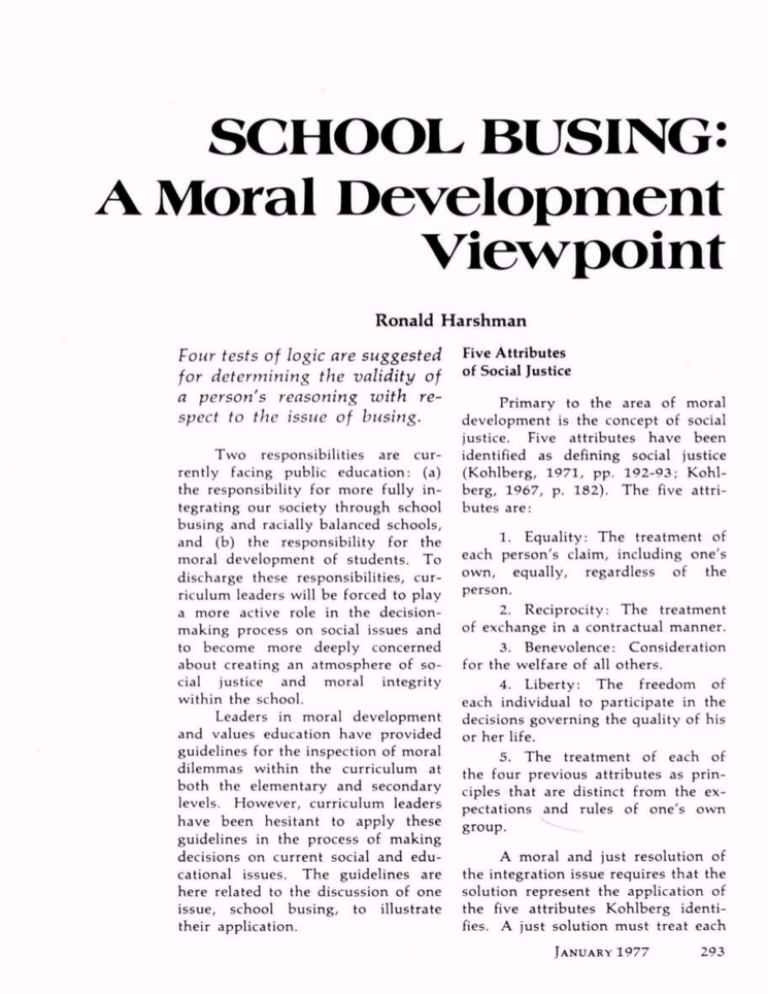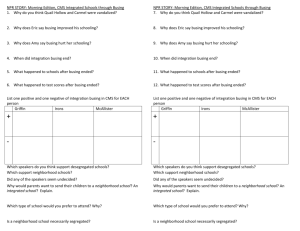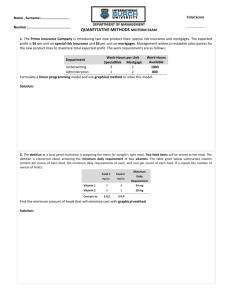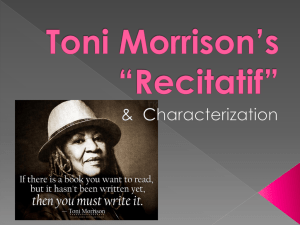
SCHOOL BUSING:
A Moral Development
Viewpoint
Ronald Harshman
Four tests of logic are suggested
for determining the validity of
a person's reasoning with re
spect to the issue of busing.
Two responsibilities are cur
rently facing public education: (a)
the responsibility for more fully in
tegrating our society through school
busing and racially balanced schools,
and (b) the responsibility for the
moral development of students. To
discharge these responsibilities, cur
riculum leaders will be forced to play
a more active role in the decisionmaking process on social issues and
to become more deeply concerned
about creating an atmosphere of so
cial justice and moral integrity
within the school.
Leaders in moral development
and values education have provided
guidelines for the inspection of moral
dilemmas within the curriculum at
both the elementary and secondary
levels. However, curriculum leaders
have been hesitant to apply these
guidelines in the process of making
decisions on current social and edu
cational issues. The guidelines are
here related to the discussion of one
issue, school busing, to illustrate
their application.
Five Attributes
of Social Justice
Primary to the area of moral
development is the concept of social
justice. Five attributes have been
identified as defining social justice
(Kohlberg, 1971, pp. 192-93; Kohlberg, 1967, p. 182). The five attri
butes are:
1. Equality: The treatment of
each person's claim, including one's
own, equally, regardless of the
person.
2. Reciprocity: The treatment
of exchange in a contractual manner.
3. Benevolence: Consideration
for the welfare of all others.
4. Liberty: The freedom of
each individual to participate in the
decisions governing the quality of his
or her life.
5. The treatment of each of
the four previous attributes as prin
ciples that are distinct from the ex
pectations and rules of one's own
group.
A moral and just resolution of
the integration issue requires that the
solution represent the application of
the five attributes Kohlberg identi
fies. A just solution must treat each
JANUARY 1977
293
•-*:--^
demonstrators are held at
bay by Boston police.
September 1 2, J974.
Phofo. UP/.
person's claim equally, provide for
the contractual exchange of benefits
and sacrifices, consider the welfare
of all others, and provide each per
son affected an opportunity to par
ticipate
in
the
decision-making
process.
Moral-development educators
have stated that the process of moral
development cannot take place in an
unjust atmosphere. If this claim is
accepted, then violation of the prin
ciples of social justice in making de
cisions on school integration not only
implements an unjust integration
policy, but inhibits the moral devel
opment of students.
Educational
leaders who fail to insist on a just
solution to the integration problem
fail to meet both responsibilities so
ciety has assigned to them.
In the area of values education,
Coombs and Meux (1971) have de
veloped a set of tests to determine
the validity of student reasoning in
the discussion of value questions.
These tests should be applied to pub
lic-policy and educational decisions.
It is the responsibility of educational
EDUCATIONAL LEADERSHIP
Mfo ••
leaders to assure that the tests have
been applied to these decisions. If a
decision will pass logical tests of
validity, then, according to the
author, it will also meet the criterion
of social justice and improve the pos
sibilities of moral development within
the educational system.
Test I: New-Cases Test
The new-cases test requires that
an individual state his or her criterion
for making a value judgment and
that the criterion be tested by con
sidering new cases to which the same
criterion can be applied. If the same
judgment (conclusion) does not
logically follow from applying the
criterion to a new case, then the cri
terion is found inadequate.
Example: I n a report on public
attitudes on school busing (Nygren,
1976), the following reason for
school busing was cited, "It is ridicu
lous to bus any kids five miles when
they have a school next door." Re
stated in the form of classic logic, the
criterion is: "All busing of children,
who live next door to a school, i s
ridiculous."
To apply the new-cases test,
cases of busing children, who live
next door to a school, are given and
the person making the judgment is
asked to state the conclusion. To be
logical, the conclusion in each cose
must be: "Busing is ridiculous."
Otherwise, the reasoning is invalid.
Example: J ohnny (a child) lives
next door to an elementary school
and is bused five miles to a different
elementary school to receive special
help in speech correction. Is the
busing of Johnny ridiculous?
It is common for some individu
als to reason that the busing of
Johnny for speech correction is not
ridiculous, but that busing for inte
gration is ridiculous. To remain
logically consistent such persons
must admit to using the criterion
that: "All busing for integration
purposes of children, who live next
door to a school, is ridiculous."
A person using this criterion
does not oppose the busing of stu
dents who live next door to schools,
but rather, the busing of such stu
dents for integration purposes. Such
opposition violates the principles of
social justice discussed earlier and
cannot be allowed to influence policy
decisions.
Students in Prince
George's County,
Maryland, eagerly run to
catch buses at the end of
another school day.
Photo: T he Washington
Post.
Test II: Role-Exchange Test
The role-exchange test asks the
person making a value judgment to
state the criterion for the judgment
and to test the validity of his or her
reasoning by exchanging roles with
individuals affected by the judgment.
To be logically consistent, the same
value judgment must follow from the
reasoning, regardless of the indi
vidual case to which the criterion is
applied.
Example: I n the Iowa poll cited
earlier (Nygren, o p. cit.), a laborer
stated: "Busing does not achieve any
thing and it causes hatred." Restated
in conditional logic form, the cri
terion is: "If an action does not
achieve anything and causes hatred,
then it is bad." The minor premise
JAMUARY1977
295
is: "Busing does not achieve any
thing and causes hatred." The con
clusion must be: "Busing is bad."
YOUR
SCHOOL:
DREAM
AND
, REALITY
SCHOOL should
experience.
be
and
can
be
a
continuously
fulfilling
• Here, every child must learn to take pride in his or her
own person.
• School is a place where the child ought to share with
others—pupils, teachers, and staff—love and appreciation
for their common work place.
• At school one learns, feels, and grows. Here, knowledge
and character develop.
Here, one thinks, plans, and
experiments.
At school one shares and develops ideas and innovations with
others.
AICE C AN HELP THE PUPIL, TEACHER, AND SCHOOL IN
THIS GROWTH AND UNDERSTANDING.
Proof: Numerous testimonials, including this one from Dr. (van
Fitzwater. Superintendent of North East ISO, San Antonio,
Texas; Chairman of the Board, National Academy for School
Executives; and Chairman of the National Conference of
Suburban Schools:
We are delighted with the results. Independent research
and the overwhelming thrust of teacher opinion convinces
us that the program is effective in building positive char
acter traits in children. The materials are ot the highest
professional calibre, lively and exciting.
See also commendatory editorial in the June 14, 1976 issue of
U.S. News & World Report, a s well as the August 1976 Thomas
Jefferson Research Center Letter.
AICE c haracter education curriculum kits are available for
kindergarten through grade five. Instructional materials for
each grade provide lessons for the entire school year. The
kindergarten kit includes filmstrips, teacher's guides, flip cards,
story wheel, and teacher's handbook, and is bilingual. Level
A-E kits include teacher's guide, posters, activity sheets
evaluation instruments, and teacher's handbook
Cost for kindergarten kit is S59.95 each; Levels A-E $39.95
each, less 10% on orders of 10 or more. For Texas delivery,
add 5% sales tax. Prices include postage and handling.
Sample materials for each level are available free.
AICE m aterials are annotated by the Texas Area Learning
Resource Center and are also on the base retrieval system of
the National Instructional Materials Information System (NIMIS).
In some instances it may be possible to purchase these mate
rials with special funding for the mentally, emotionally, or
physically handicapped.
AMERICAN INSTITUTE FOR CHARACTER EDUCATION
P. O. Box 12617, San Antonio, TX 78212
Phone (512) 734-5091
296
EDUCATIONAL LEADERSHIP
The role-reversal test asks: "If
you were a black child and were to
receive a better education in an in
tegrated school, would busing be
bad?" To be logically consistent with
the criterion used, the conclusion
must be that busing is good if a bet
ter education results (busing achieves
something or it is not the case that
busing achieves nothing). The eval
uation of busing can now be con
ducted on the basis of improved
education, an item on which data
can be gathered and a more objective
decision can be achieved.
Test III:
Universal-Consequences Test
The universal-consequences test
asks the question: "What if every
one acted by a given value?" The con
cern is to state the criterion for value
judgments in the form of a principle
that applies to all cases equally. An
example of a universal-consequences
test follows:
Example: One of the reasons
for supporting school busing given
in the Iowa poll is: "Attending an
integrated school is good experience
for children." The criterion stated in
conditional logic form is: "If an ac
tion provides good experience for
children, then the action should be
continued." The minor premise is:
"School busing for integration pro
vides good experience for children."
The logical conclusion must be:
"School busing should be continued."
The universal-consequences test
asks: "What if everyone believed
that actions that provided good ex
perience for children should be con
tinued?" To be consistent, the
person in the example given must
agree that it would be good for
everyone to believe in continuing
good experience for children.
A result of this application of
the universal-consequences test is to
focus attention on the statement:
"School busing for integration pro
vides good experience for children."
To further test the reasoning of the
judgment, a definition of "good ex
perience" may be requested. Given
a definition of "good experience" and
data on the results of school busing,
the statement can be tested for ac
curacy. If the data provide evidence
that school busing does provide good
experience for children, then the
logical conclusion must be, "School
busing should be continued."
Test IV: Subsumption
The subsumption test asks for
the criterion of a value judgment to
be subsumed, or placed as a minor
premise or conclusion, under a more
general principle. For the criterion
to be valid, the syllogism produced
must be logically valid.
F.\iunfilc: A woman reported in
the Iowa poll that school busing was
good because, "All races should have
a right to equal schools." If asked
for a more general principle, the
woman might state the attribute of
social justice: "The claims of all peo
ple should be treated equally, regard
less of the person." The syllogism
produced is:
M njor PrcinifC: The claims
of all people should be treated
equally, regardless of the person.
Al/nor P remize: E ducation is
a claim of all people.
Coiichisic'i: Therefore, the
education of each person should be
treated equally, regardless of the
person.
The four tests reviewed are
tests for logical validity in reasoning
on value issues. Testing value judg
ments for logical validity assures
that the judgments are based on
principles that they are statements
of criteria that apply equally to all
cases. Judgments of social and edu
cational issues on the basis of prin
ciples are necessary if we are to
maintain an atmosphere of social
justice and provide for moral devel
opment within our schools.
As educational leaders, we must
be concerned that we apply these
tests to our own reasoning and the
reasoning of others as we develop
solutions to the school busing and
integration problem. If we fail to
apply these tests, then we fail the
responsibilities to more fully inte
grate our society and to provide for
the moral development of students.
^
References
Jerald R. Coombs and Milton Meux.
"Procedures
for Value Analysis."
In:
Lawrence E. Metcalf, editor. Values Edu
cation : Rationale, Strategics, and Proce
dure*. 4 2nd Yearbook of the National
Council for the Social Studies. Washing
ton, D.C.: the Council, 1971.
Lawrence Kohlberg.
"From Is to
Ought: How To Commit the Naturalistic
Fallacy and Get Away with It in the Study
of Moral Development."
In: Theodore
Mischel, editor.
C ognitive. Development
ami Epistcmology. New York: Academic
Pre^s, Inc., 1971.
Lawrence Kohlberg.
"Moral and
Religious Education and the Public Schools:
A Development View." In: Theodore R.
Sizer, editor. R eligion and Public Educa
tion.
B oston, Massachusetts: Hough ton
Mirflin Company, 19e7.
Bruce Nygren. "Opposition to Bus
ing Strong, Iowa Poll Finds." D CS M omcs
Sunday Register, A pril 25, 1976, p. 20A.
Ronald Hai~?lirnan /?
Coordinator of
Preject SCATE
(Students Concerned
About Tomorrow's
Environment), low ft
Department of
Public Instruction,
Des Moines.
JANUARY 1977
297
Copyright © 1977 by the Association for Supervision and Curriculum
Development. All rights reserved.










